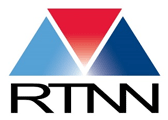
About Kelly: My name is Kelly White and I’m a third-year Ph.D. student from the department of chemistry at UNC Chapel Hill under advisement from professor Jim Cahoon. My work focuses on designing silicon nanowire geometric diodes for high frequency rectification. Through a combination of simulation and experiment, I seek to understand the ratcheting mechanism that makes these diodes work and establish design principles that dictate their performance. My goal is to eventually create silicon nanowire geometric diode rectenna devices that function as THz detectors. In my free time, I love playing tennis and squash, hiking with my dog, metalsmithing, and cooking.

SEM image of a surface gated silicon nanowire geometric diode device. The image is made possible by using four different CHANL instruments over nine different sessions.
What RTNN facilities or instruments are you using in your research, and how do they help you? CHANL facilities make it possible for me to do single-nanowire device fabrication and imaging. I use the SEM, DRIE, and e-beam evaporators to create devices using e-beam lithography and evaporation, and the ALD to modify nanowire surfaces and create surface gated devices. With these instruments, I am able to fabricate intricate devices on an incredibly small scale and measure the electronic properties of single silicon nanowire geometric diodes.
What about your research makes you excited about its impact? I am excited by the unique advantages of geometric diodes. Unlike traditional diodes, they are capable of rectifying high frequencies into the THz regime. If we can realize this THz rectification, silicon nanowire geometric diodes could be used for ultrafast communication and long wavelength energy harvesting, and eventually play an important role in the internet of things.
What is your favorite thing about using RTNN facilities? The RTNN staff go above and beyond when it comes to training, keeping instruments in good condition, and troubleshooting problems. I am always grateful for their willingness to drop everything and help when needed.

